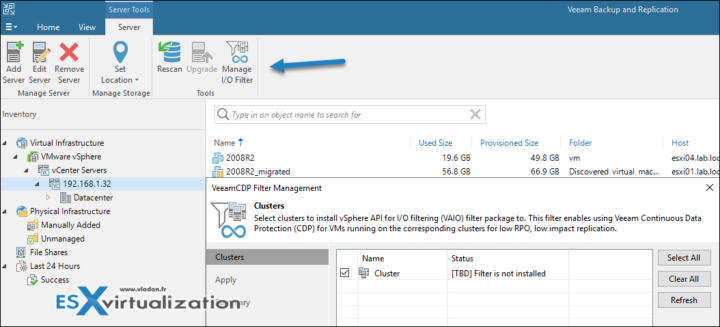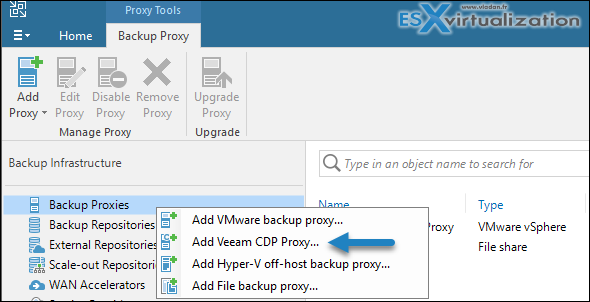It has been about a week that the RTM of Veeam Backup and Replication 11 is RTM and available to partners and Vanguards and today is the official announcement (link here). You can join the online presentation with demos today. The product is available for download. Partners and service providers upgraded their Veeam installations since 2 weeks, so Veeam had some more time to iron out some last min bugs, if any.
Veeam Backup and Replication 11 is part of large product suite. Gone are the days that Veeam was one product company only. Veeam has now a large portfolio of products that are useful for small, medium and large corporations, including cloud service providers. With the v11 event, 12 individual products and components are announced (and are RTM) at the same time!
Veeam v11 has many new features that we have talked about already. One of my favorite are some of the new security enhancements, such as hardened remote repositories. On Linux repositories, where you store your backups, will be finally able to use the immutability feature. If you don't know what is it it is fairly simple, it is making those backups impossible to delete.
Veeam CDP (continuous data protection)
Veeam CDP is another new feature in v11 of Veeam that allows, by using VMware VAIO filters, to improve RTO of your VMs from minutes to seconds. It intercept and redirect VM's I/O to the replica without the need to create traditional snapshot of the VM. (this feature is only for Veeam Replication, not for backup).
To use this feature you'll need to first activate (deploy) the CDP filters onto your ESXi hosts (that must be in “community supported” mode) from the Veeam UI.
Screenshot from Beta 2 installed in the lab below….
Then you'll need to add a CDP proxy. It's a machine where the component will be deployed remotely. You should chose a server that is Windows server and that does not have the CDP proxy role already. Those machines can however have other roles.
Veeam v11 is Faster
Veeam has improved the speed of the product, to reduce the bottleneck. They optimized how Veeam writes backup files to storage or how their shared memory engine works. This is the engine that passes data between source and target data movers running on the same server. With those optimizations now even RAM can become a bottleneck so Veeam had to also optimize the compute with the data movers placements the way so they respect NUMA so they're not working on different CPU.
From Veeam community blog :
- Backup performance per appliance (all-in-one box) doubles in v11.
- Revise and optimize basics:
- How are backup files written to disk.
- Shared memory transport engine, when source- and target-datamover on same box.
- Implemented full NUMA awareness
- Enhance the data movers placement logic to ensure they never end up on different CPUs.
There is more new features and enhancements in v11. It's a huge release. A quick quote from the What's new in v11 pdf can be found below….
And from the “What's New in v11” PDF:
Version 11 more than doubles backup performance for all-in-one Veeam deployments on general-purpose server hardware, enabling customers to exceed 11 GB/s backup speed per node — so long as primary arrays and storage fabric can keep up! This huge leap in performance is achieved through the multiple improvements aimed at enterprise-class server and storage hardware:
- System cache bypass — With v11, target data movers will bypass OS cache to ensure they do not interfere with controller-side caching and advanced I/O optimizations of enterprise-grade RAID controllers, both reducing the backup repository CPU usage and increasing performance by up to 50%.
- Aligned writes — Unaligned writes impact both storage CPU usage and performance, so v11 will avoid them by aligning each backup file data block to a 4 KB boundary. This feature is enabled by default for newly created repositories and can be mass enabled on the existing repositories with PowerShell. Active full backup is not required for the new setting to take effect.
- Improved shared memory transport — At data processing speed approaching 100 Gbps, even modern RAM speed starts to make a difference to overall data processing performance. Version 11 optimizes RAM interactions, significantly improving the speed with which data is passed from source to target data movers when they are running on the same server.
- NUMA awareness — To avoid internal bus congestion from cross NUMA node traffic, in multi-CPU servers, dependent process should ideally be placed within the same node. Version 11 implements full NUMA awareness and ensures source and target data movers never end up in different nodes.
- Optimal compression improvements — We updated our default compression algorithm implementation, delivering a slightly better compression ratio and significantly faster decompression performance. For example, the execution of a SQL query returning 30 GB of data against a Stack Overflow database running in an instantly recovered VM now takes 28% less time compared to v10.
- Resources scheduler improvements — We made many optimizations to our backup infrastructure resource scheduler, reducing the time it takes to issue the resource by up to 50%, which significantly accelerates job start time. The improvement should be especially significant in an environment with a large number of backup proxies, repositories and Scale-out Backup Repository extents.
Join Veeam today for the presentation and demos of Veeam Backup and Replication 11.
Stay tuned for more content about Veeam.
More posts from ESX Virtualization:
- vSphere 7.0 Download Now Available
- vSphere 7.0 Page [All details about vSphere and related products here]
- VMware vSphere 7.0 Announced – vCenter Server Details
- VMware vSphere 7.0 DRS Improvements – What's New
- How to Patch vCenter Server Appliance (VCSA) – [Guide]
- What is The Difference between VMware vSphere, ESXi and vCenter
- How to Configure VMware High Availability (HA) Cluster
Stay tuned through RSS, and social media channels (Twitter, FB, YouTube)



